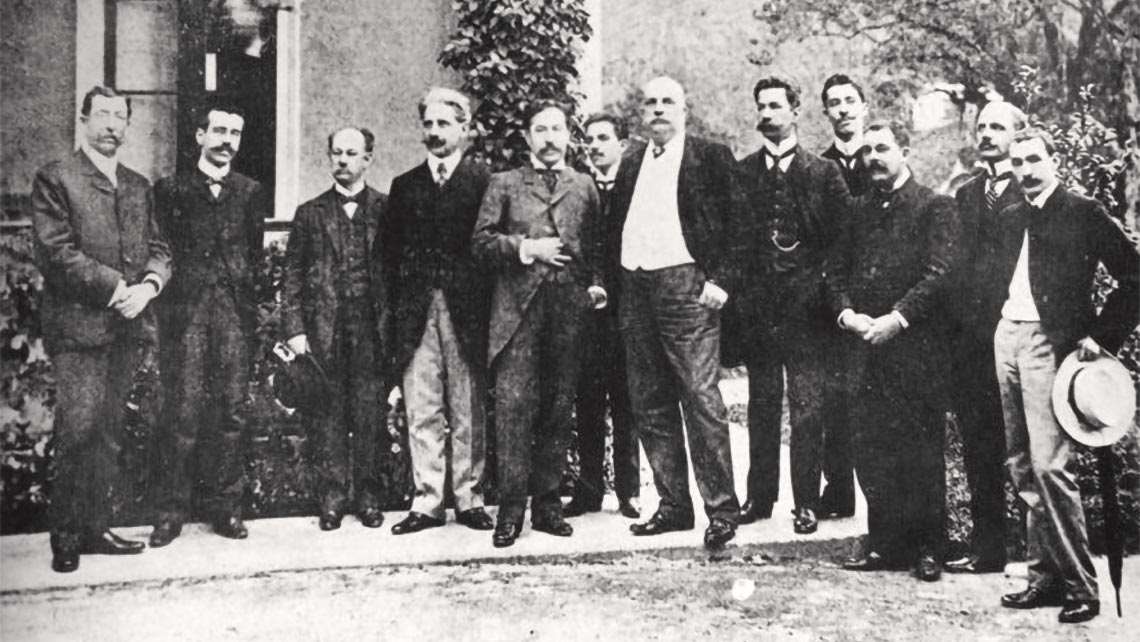A subject of academic debates since the nineteenth century, the unity of the Brazilian territory after achieving independence was for decades analyzed in juxtaposition to the disaggregation of Hispanic America, which eventually resulted in the formation of 18 countries. Across a broad range of research, issues such as the enslavement of Africans, the differing colonial administrative systems, the development of respective national identities, and the defining of territories served as a basis from which to highlight the differences between the colonies’ destinies. This approach began to change in the mid-twentieth century. The focus of current studies has been to provide nuance to these comparisons, bringing to light the differences that marked the Brazilian constitution and the attempts to break with the government of Dom Pedro I (1798–1834).
“At the beginning of the nineteenth century, the region we currently call Brazil was made up of several more or less connected regions, and the colonial administration did not control all of them. Until at least 1825, a national territory was not assured, because of the movements within Brazil against emancipation from Portugal,” argues historian Andréa Slemian, from the Federal University of São Paulo (UNIFESP). In her view, Brazilian historiography has been dedicated to demonstrating that the conception that a united nation existed was a narrative built during the imperial period, then was further maintained throughout the birth of the republic and up to the present day. “Politicians, historians, and writers valued this perspective of the greatness and unity of the Brazilian territory and held this characteristic up in juxtaposition to the fragmentation of Hispanic America,” comments historian Maria Ligia Coelho Prado, from the University of São Paulo (USP).
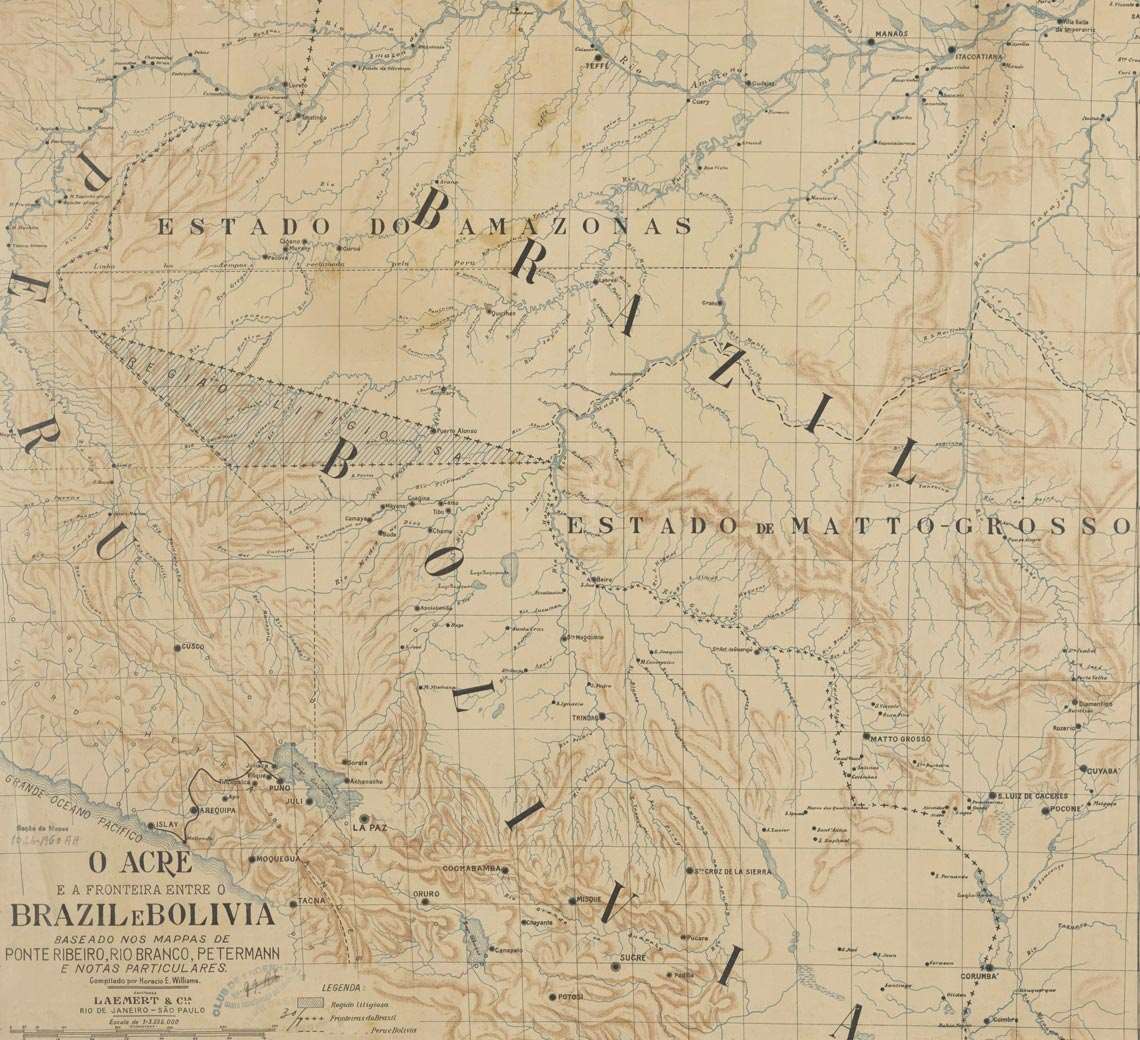
National Archives A map indicates the current territory of the state of Acre, then designated as “litigious region.”National Archives
From a similar perspective, historian Marcelo Cheche Galves of the State University of Maranhão (UEMA) observes that particularly during the nineteenth century, the historical narrative prized a view of the country’s territorial unity. As an example, he points to the writings of the Brazilian historian, military officer, and diplomat Francisco Adolfo de Varnhagen (1816–1878), who promoted a vision of Brazil as the “heir of Portugal” and Brazilian Independence as the result of a “rift within the Portuguese royal family.” The diplomat, historian, and bibliophile Manuel de Oliveira Lima (1867–1928) even used the expression “friendly divorce” when referring to Brazil’s independence. “These ideas formed the foundations of our historiography, creating echoes throughout the development of this field of knowledge,” says Galves.
In the 1970s, as a result of studies such as those by historian Carlos Guilherme Mota, from USP, this perspective began to change. Mota began to analyze Brazil’s independence based on elements such as how Enlightenment ideas were appropriated within the emancipationist projects of local settlers, maintaining that Brazil, even in the 1970s, was dependent on European metropolises. This approach was further explored with the research of historians Maria Odila da Silva Leite, in the 1970s, and István Jancsó (1938–2010), also from USP, at the beginning of the twenty-first century. Both argued that we need to think about “the independences” of Brazil in the plural. “In 1972, the year that the 150th anniversary of the emancipation was celebrated, the military government [1964–1985] hijacked the occasion to assert that Dom Pedro I had given Brazil its political independence and the military its economic independence,” points out Galves.

Wikimedia CommonsEquestrian statues of Hispanic American independence leaders: Simón Bolívar in Caracas, Venezuela…Wikimedia Commons
The Maranhão historian is one of the researchers who has examined the diverse origins of the independence process. In his view, the autonomy project created by Dom Pedro I served the interests of provinces such as Rio de Janeiro, Minas Gerais, and São Paulo, while giving short shrift to the demands of other provinces. Regional wars broke out as a result, in opposition to the new imperial government’s plans, among them the Farroupilha Revolution (1835–1845), in the province of São Pedro do Rio Grande do Sul; the Cabanagem revolt (1835–1840), in Grão-Pará; and the Sabinada uprising (1837–1838), in Bahia. “In Maranhão, the population identified more with Portugal than with the Royal Court of Rio de Janeiro,” he notes. “Although the Court’s project was the winner, it wasn’t the only movement.”
Geographer Manoel Fernandes de Sousa Neto, from USP, recalls that Grão-Pará and Maranhão existed as separate states from Brazil until the beginning of the 1820s, when each region signed a treaty to join with the project designed by the government of Dom Pedro I. Acre, a region that had belonged to Bolivia and Peru, lived with armed conflicts for years and was only annexed to Brazil in 1903 after the signing of the Treaty of Petrópolis. “Until the beginning of the twentieth century, Brazil conquered territories, while Hispanic America was marked by a process of territorial disaggregation from the former Spanish domains,” Galves says.
Based on research developed by geographer and social scientist Antonio Carlos Robert de Moraes (1954–2015), Sousa Neto argues that, since its independence, the nation has invested in forming what he calls a “territorial savings account.” “Those in power fought to incorporate the northern regions as a way of having at their command territorial assets that could be economically exploited as the nation developed and demanded natural resources to modernize,” he argues, contending that the same logic underlies the current challenges involving the devastation of the Amazon rainforest for illegal mining activities and soy plantations.
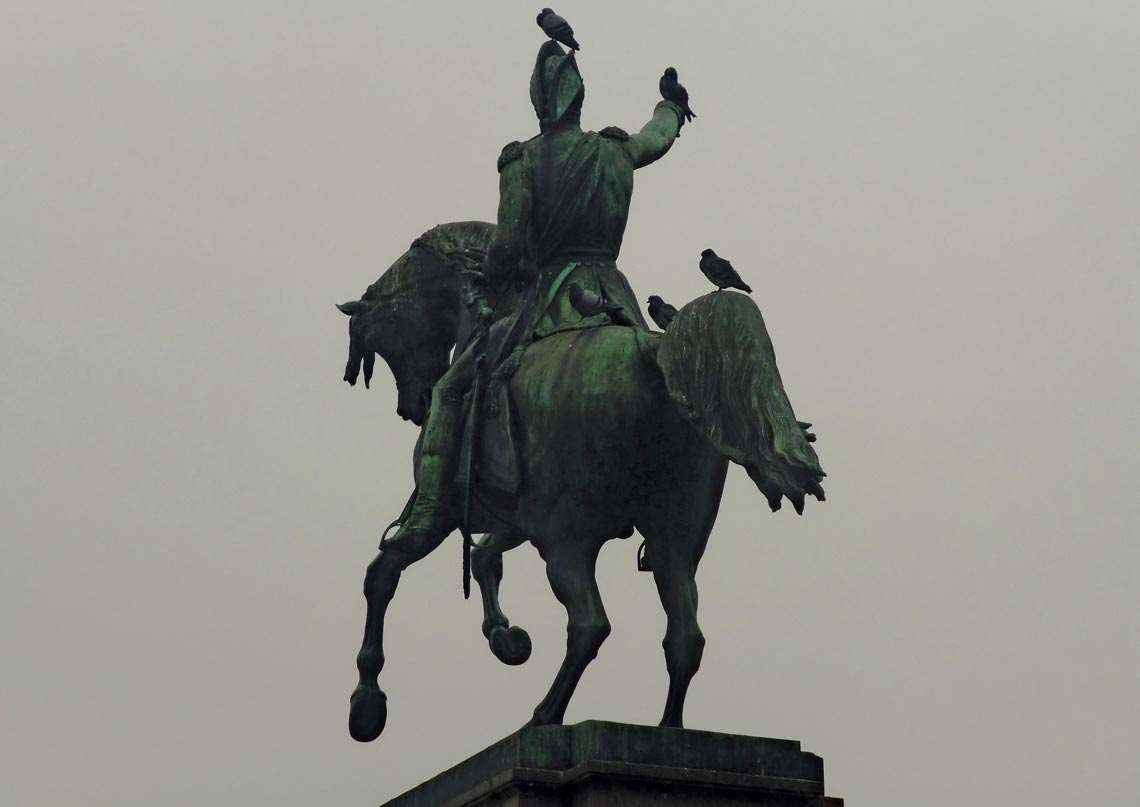
Wikimedia Commons…and José de San Martín in Buenos Aires, ArgentinaWikimedia Commons
Considering the plurality of interests and conflicts that existed between the Brazilian provinces during the process of gaining independence, another central question has mobilized scientific research around the theme: “after all, why didn’t Brazil break apart?” There is no consensus in the answers, which result from analyses of various objects of study, one of them being slavery.
Although each had its own individual, specific historical contexts and motivations, some rebellions within the national territory during the independence process had certain demands in common, among them the need for autonomy on the part of the provinces regarding tax payments, and dissatisfaction with economic problems and the presence of Portuguese citizens in administrative positions. In addition, most of them did not have antislavery programs and, therefore, did not incorporate the enslaved, making any possibility of radicalization unfeasible. “This is why, after the insurgent movements were defeated, the ruling elites in provinces such as São Pedro do Rio Grande do Sul and Bahia renegotiated relations with the imperial government so that their demands could be partially met without affecting the slave system, which was at that time central to the country’s economic activities,” proposes historian Rafael Marquese, from USP. Marquese built his argument based on the thinking of two Brazilian political scientists and historians, José Murilo de Carvalho, from the Federal University of Rio de Janeiro (UFRJ), and Luiz Felipe de Alencastro, from the São Paulo School of Economics at Fundação Getulio Vargas (EESP-FGV). He explains that in the eighteenth century, Portuguese America had 18 captaincies, whose markets were integrated through mining activities. “Slavery existed in every region under white, colonial rule and structured the relationships of society. Despite being a world fraught with tensions, the slave system created the bond which formed the Brazilian state, because it produced a uniform social landscape and united the elites around a common interest, which was the maintenance of slavery,” Marquese says.
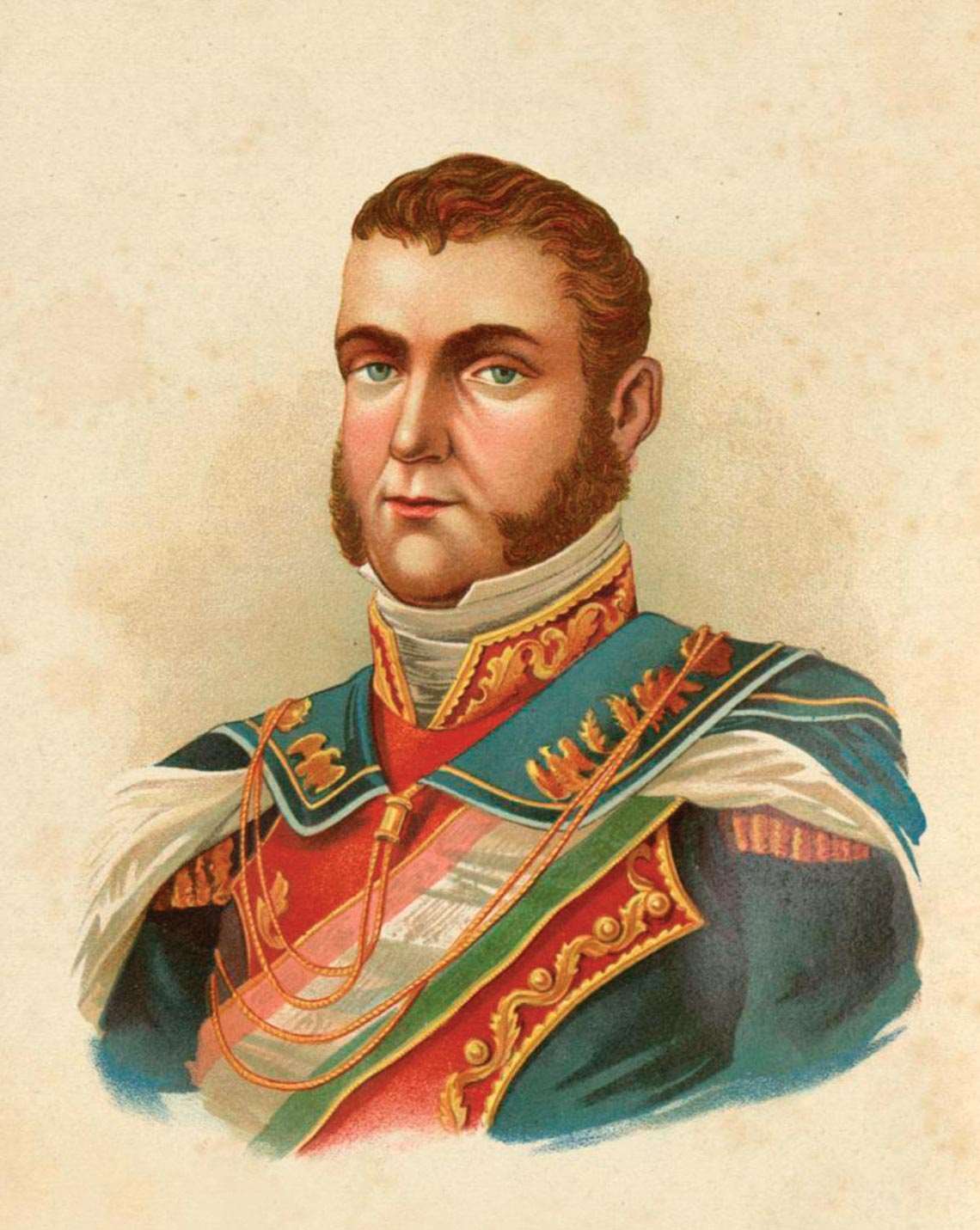
Wikimedia CommonsPortrait of the Mexican general Agustín de Iturbide, who fought against the insurgencies for independence, but later facilitated an agreement among the elites that led to Mexico’s independenceWikimedia Commons
In Hispanic America, however, there were several types of differing conditions, explains Prado. There were fewer enslaved Africans living in Mexico, Argentina, and Uruguay, while in Colombia, Venezuela, Haiti, and Cuba the subjugated population was larger. “The exception was the case of the French colonies in Saint Domingue, the future Haiti. After the abolition of slavery by the French Revolution [1789–1799], the slaves became the leaders and agents of the conquest of independence, even expelling the whites from their territory,” explains the historian. “Cuba, on the other hand, remained a Spanish colony longer, and only became independent in 1898. The elites had feared a rebellion like the one that took place in Haiti, and combined forces with their colonial power to guarantee the slave system was maintained,” she adds.
Notwithstanding the search to provide nuance regarding the antagonism in analyses on the independence processes of Latin American nations and Brazil, after the invasion of the Iberian Peninsula in 1807 by the troops of French Emperor Napoleon Bonaparte (1769–1821), the kingdoms of Spain and Portugal took different paths. King Dom João VI (1767–1826) decided to leave Portugal and settle in Brazil; Ferdinand VII (1784–1833), the King of Spain, was taken prisoner in France and watched as the French Emperor’s brother Joseph I (1768–1844) was placed on his throne. “With the arrest of the Spanish king, there was internal resistance against the French monarch. Spanish America began to see strong political agitation questioning loyalty to the new metropolitan government,” Prado says.
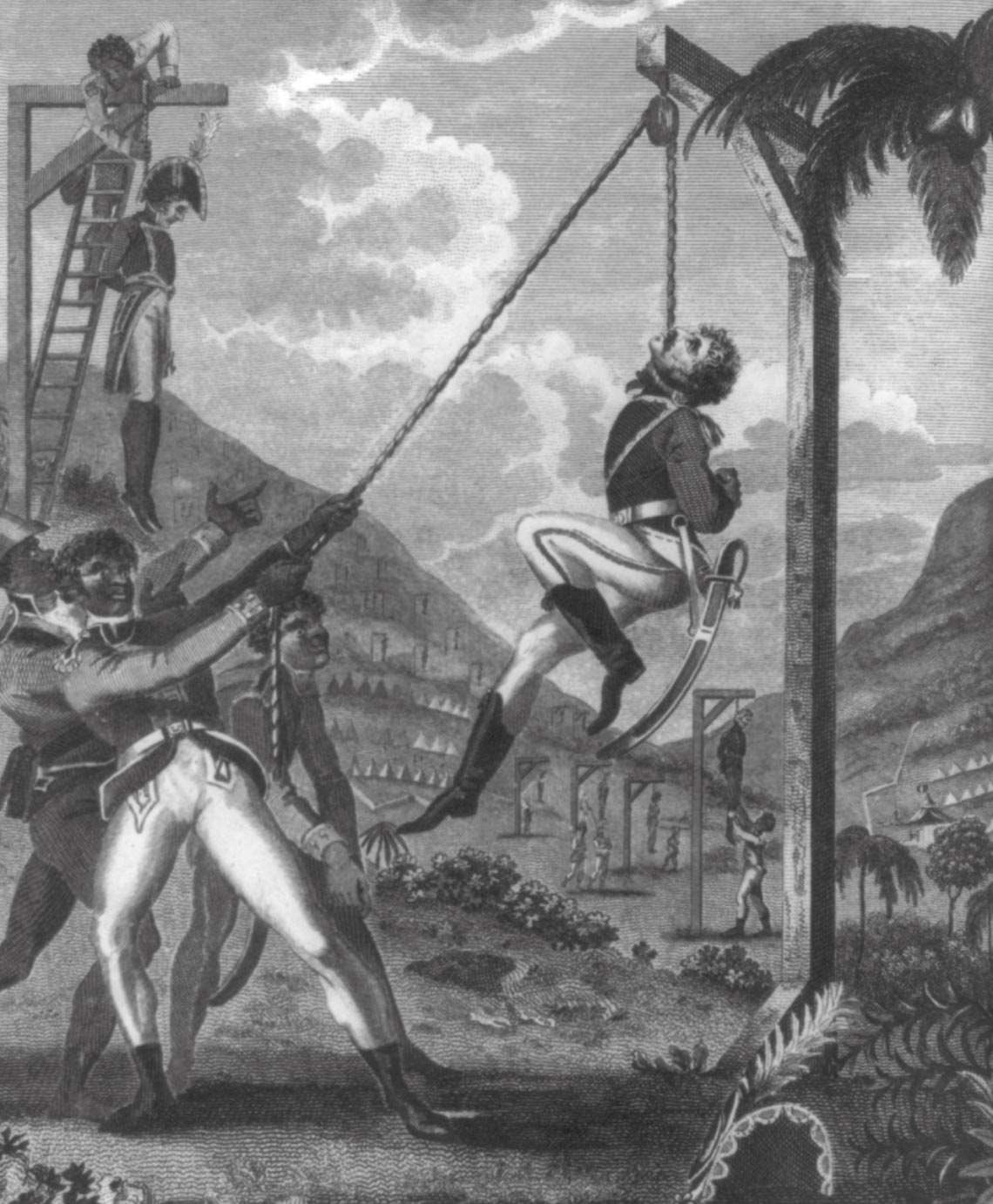
Library of the CongressHaitian rebels hang a landowner during the Haitian Revolution (1791–1804)Library of the Congress
In the case of Brazil, the historian believes that the transfer of the Portuguese Royal Court to Rio de Janeiro contributed to maintaining the idea of territorial cohesion. “This attitude was reinforced when, years later, Dom João’s own son led the move to independence,” she emphasizes. In research conducted on the minutes of municipal councils and newspapers from various provinces—as part of a study financed by FAPESP—historian Jean Marcel Carvalho França, from the Universidade Estadual Paulista (UNESP), Franca campus, found that Dom Pedro I was recognized as a leader, and received popular support even in small, inland communities. One of the results of the study, completed in 2021, was the creation of a database open to other researchers. “Despite the rebel movements, in general there was an atmosphere of elation surrounding the figure of the prince, who was a collaborator in the process of consolidating the national territory,” says França, who points to texts published in the newspaper O Espelho, which circulated in Rio de Janeiro between 1821 and 1823.
According to Prado, from USP, another aspect that defines the destiny of Hispanic America is related to the fact that during colonization Spain’s administrative system differed from the Portuguese model. The region was organized into four viceroyalties, namely, Peru, whose seat was in Lima; New Spain, headquartered in Mexico City; New Granada, in Bogotá; and Rio de la Plata, in Buenos Aires. In addition, there were four general captaincies: Venezuela, Chile, Cuba, and Guatemala. “These elements of the administrative division reported to a greater power, the Spanish Crown,” he says.

New York Public LibraryPortrait of François-Dominique Toussaint L’Ouverture (1743–1803), leader of the Haitian RevolutionNew York Public Library
Historian Gabriela Pellegrino Soares, from USP, clarifies that initially the viceroyalties were loyal to the King of Spain, who was in prison, but little by little this attitude gave way to projects aimed towards autonomy and rupture with colonial power. “Thus, the regions began to organize revolutionary armies to break with Spain. In 1814, Napoleon suffered defeat and King Ferdinand VII was restored as monarch of the Spanish Empire. Then Spain sent a large army to contain the dissident movements that were in progress,” details the historian. Since the rebel groups were numerous and its army had a limited number of soldiers, Spain first mobilized its troops to fight insurrection movements in the viceroyalty of New Granada, where the insurgent group was led by revolutionary general Simon Bolivar (1783–1830). “Hispanic America was marked by armed conflicts that swept the continent between 1810 and 1825,” observes Prado.
The historian points out that the last bastion of the Spanish Crown was the Viceroyalty of Peru, which corresponds to the current territory of Peru and Bolivia, where the Viceroy managed to resist the revolutionaries’ siege until the arrival of General José de San Martín (1778–1850) and his troops. San Martín had been a major player in the struggle for Argentine independence, which was consolidated in 1816, and crossed the Andes with 5,000 soldiers to reach the region. Peru became independent in 1821; Bolivia in 1825. “While Bolívar is recognized as a hero of independence in Venezuela, Colombia, Ecuador, and Bolivia, San Martín plays the same role in Argentina and Peru, having supported the liberation of Chile,” she points out.
The indigenous groups, Soares observes, reacted in differing ways to the campaigns for independence. In the Andes region, from Colombia to Chile, the indigenous peoples were Christianized peasants who maintained close relations with the colonial power. “At the beginning of the nineteenth century, the Mapuche people—who lived in the region that is now south-central Chile—were against the emancipation projects, because they had signed peace treaties with Spain that could be threatened by a change of government,” she explains. On the other hand, when Argentina emancipated itself, the new government had the news translated and disseminated in various indigenous languages. “It was officially communicated to these populations that there was a new regime,” she adds, noting that members of the revolutionary armies knew the languages of the native peoples and used these languages as a way of engaging them in the struggles for emancipation.
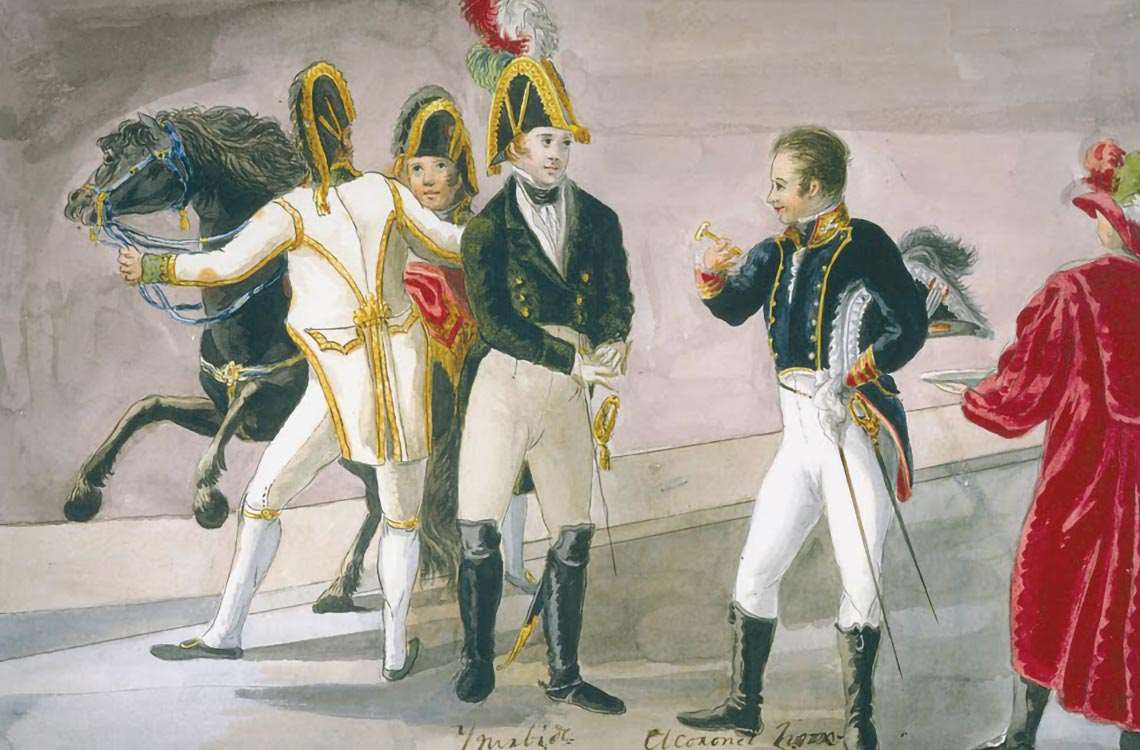
Theubet de Beauchamp / Wikimedia CommonsIturbide receives the keys to Mexico City after it gained independenceTheubet de Beauchamp / Wikimedia Commons
In Mexico, it was up to a representative of the Catholic Church, the parish priest Miguel Hidalgo y Costilla (1753–1811) to lead, from 1810 onwards, the first revolutionary movement defending an end to the colonial relationship and calling on the indigenous people to rise up against the Spaniards. “The priest carried banners with images of the Virgin of Guadalupe, who had indigenous features,” explains Soares. The insurrection movement suffered a violent repression and Hidalgo, even with the support of a large people’s army, did not escape execution. “The rebel movements continued throughout the country until 1821, when General Agustín de Iturbide [1783–1824], who had previously fought against the insurgencies for independence, facilitated an agreement among the elites in order for Mexico to become independent from the Spanish Crown,” says Prado.
In the case of Brazil, Sousa Neto, at USP, believes that the state’s guarantee that the elites could continue to appropriate land, own large estates, and count on slave labor, made the country’s cohesion possible. “Today, we form a territorial state, but do we form a nation?” the geographer asks. Sousa Neto adds that Brazil was not only invented symbolically, but also materially, through military, political, and economic processes. “The Brazilian state, built during the 1800s, made use of the geographical myth of territorial untouchability to maintain a strong political center around the figure of the emperor, expressed in an exemplary way in the military actions that quelled the regional revolts that took place during the nineteenth century, the geographer says. According to his interpretation, we are a society that holds territorial cohesion as a central element of our identity, a narrative constructed in contrast to that of Spanish America, seen as a place of warring factions, civil wars, economic regression, and anarchy, while Brazil was the country of unity, order, and civilization. “The Brazilian flag even includes blue as a symbol of nobility and yellow to represent gold, while green refers to the Portuguese royal family of Bragança, a distinctly different iconography than used in the flags of Hispanic countries, which allude to movements of liberation and revolutionary processes,” the geographer says.
Prado recalls that, in Venezuela, for example, national identity was formed around the figure of Bolívar. She adds that in Colombia, although society recognizes the important role played by Bolívar in its history, the legal scholar, military officer, and politician Francisco José de Paula Santander (1792–1840) became their model for future liberal politicians. “The name ‘Latin America’ was invented in the nineteenth century and, from the end of the century on, a Latin American identity was under construction, as juxtaposed to the Anglo-Americans of the United States,” the researcher concludes.
Project
Writings on the new worlds: A history of the construction of moral values in the Portuguese language (nº 13/14786-6); Grant Mechanism Thematic Project; Principal Investigator Jean Marcel Carvalho França (UNESP); Investment R$958,320.68.
Books
Various authors. Coleção memória atlântica. Grupo de pesquisa escritos sobre os novos mundos. São Paulo: FAPESP, UNESP Publishing Foundation and the Portuguese Academy of History.
NETO, M. F. S. A geographer of power in the Empire of Brazil. Rio de Janeiro: Consequência, 2018.
Book Chapters
PRADO, M. L. C. “Identidades latinoamericanas (1870-1930)”. In: MORA, E. A. and CARB´O, E. P. (eds.). Historia general de América Latina: Los proyectos nacionales latinoamericanos: Sus instrumentos y articulación, 1870-1930. Paris: Ediciones Unesco / Editorial Trotta, 2009.
Scientific articles
NETO, M. F. S. A ciência geográfica e a construção do Brasil. Terra Livre. no. 15. pp. 9–20. 2000
MARQUESE, R. The other side of the antislavery republics: The empire of Brazil and the making of the second slavery. 7th Annual International Conference Antislavery Republics: The Politics of Abolition in the Spanish Atlantic. Gilder Lehrman Center for the Study of Slavery, Resistance, and Abolition. Yale University. 2015.
Dossier
As independências latino-americanas. Revista USP. Vol. 1, no. 130. 2021.


